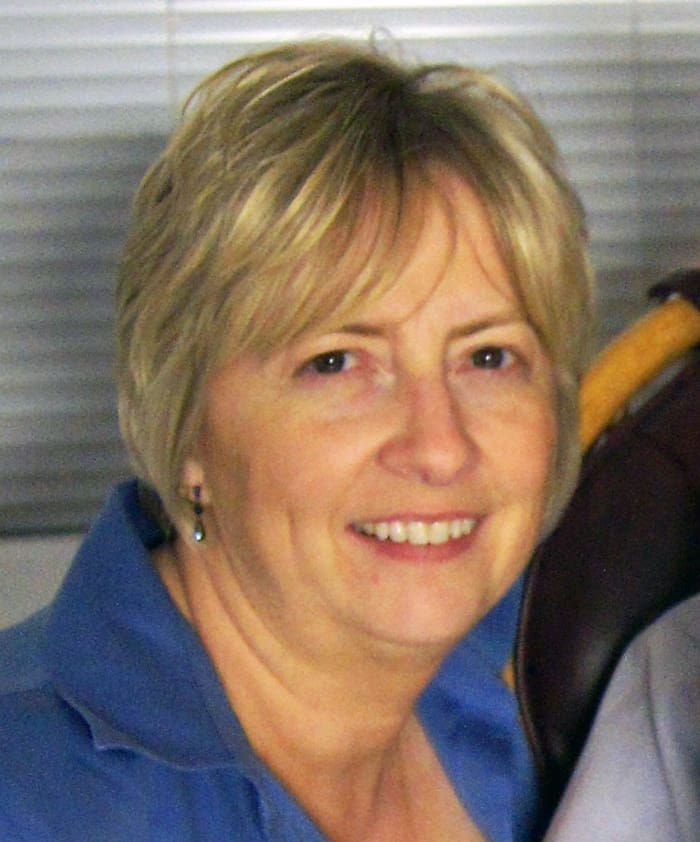
By: Marlene Oxender
As I continue to sort through the memorabilia in my parents’ estate, I’m finding photos that bring back fond memories from long ago.
My parents had purchased our family home and property in 1947, and nearly eighty years later, I’m writing about it. Since our youngest brother Stevie still lives in the house we grew up in, my siblings and I can still go “home.”
As our children were growing up, they knew the house as their grandparents’ home. Now it is known as Uncle Stevie’s home.
The backyard ended up being a place that hosted many hours of playtime. A place where we gathered with cousins and neighborhood friends. A place where you went home with more bumps and bruises than you’d arrived with.
The east yard beside our house was large enough for a baseball diamond, and the outfield was Mrs. Hug’s yard. Homeplate and the three bases were simply bare patches where the grass was no longer growing.
It wasn’t difficult to find homeplate, for it was large. But you had to search for the other three bare spots to make sure your foot touched it before heading to the next base.

Ed and Jeanette Kimpel
There were a few trees that were just the right size for climbing – so we did. And baby buggies, bicycles, and wooden stilts made their way up and down the front sidewalk.
A few years ago, I put together an informal gratitude journal. It’s a simple three-ring binder with plastic sleeves that holds the photos, cards, and notes I’d received over the years.
What could be better than a gratitude journal I didn’t write? It’s full of words inked from someone else’s pen. Thoughts from my friends. Thoughts from my family. The Xs and Os that I will never part with.
My sisters can remember saying goodbye to our brother Ed when he was entering the service. He was in the Army for two years, and each time he came home on leave, it was a good thing. That’s when the smiles and hugs happened.
But his time at home quickly passed, and I’m told it was no fun each time they had to say goodbye. I’m grateful my only memories are from the day he came home for good.
I remember yellow ribbons tied on trees throughout our little town because the servicemen were starting to come home.
Jeanette and I stayed with Grandma and Grandpa Imm while our mom and dad went to the airport to bring Ed home. When they arrived back at our grandparents’ home, and he walked in with his Army uniform on, I was glad to see him.

But Jeanette was five years old, and she took off to hide. We could see her blond hair from behind the living room end table. Once she decided to come out, it didn’t take long for her to warm up to her older brother.
In the eyes of my brothers and sisters, Jeanette and I will always be the two little girls in the family. The first time Ed heard my grandson call me “Grandma,” he told me it seems strange to hear someone refer to the little girl in the family as a grandmother.
When you think about it, one requirement for becoming a grandmother is you have to be a little girl first.
My mother loved to write about times gone by. She lived to the age of 92 and a half, so she had a lot of times that had gone by.
My dad, like many dads, was a guy who liked to share things, whatever and whenever he could. Things like garden produce. Or quarts of strawberries he’d handpick and deliver to his friends.
When it comes to giving and receiving gifts, it may be true that it’s often more fun to be on the giving end rather than the receiving end. But we know we have to let others have a chance to give – so we accept.
One of the best things about getting older is we often become clearer about what does and does not matter.
It does matter that the neighborhood kids have a place to meet. A place where grass stains and skinned knees happen. A place where the homeplate and bases are more important than the lawn.
A place where things aren’t always fair. A place where you learn how to be tough. Or not so tough.
Photos are a funny thing. They are capable of capturing just a little moment in time – yet a single photo can show us what the most important things in life really are – the people, the places, the feelings, and the smiles.
———————–
Marlene Oxender is a writer, speaker, and author. She writes about growing up in the small town of Edgerton, her ten siblings, the memorabilia in her parents’ estate, and her younger brother, Stevie Kimpel, who was born with Down syndrome. Her two recently published books, Picket Fences and Stevie, are available on Amazon.
